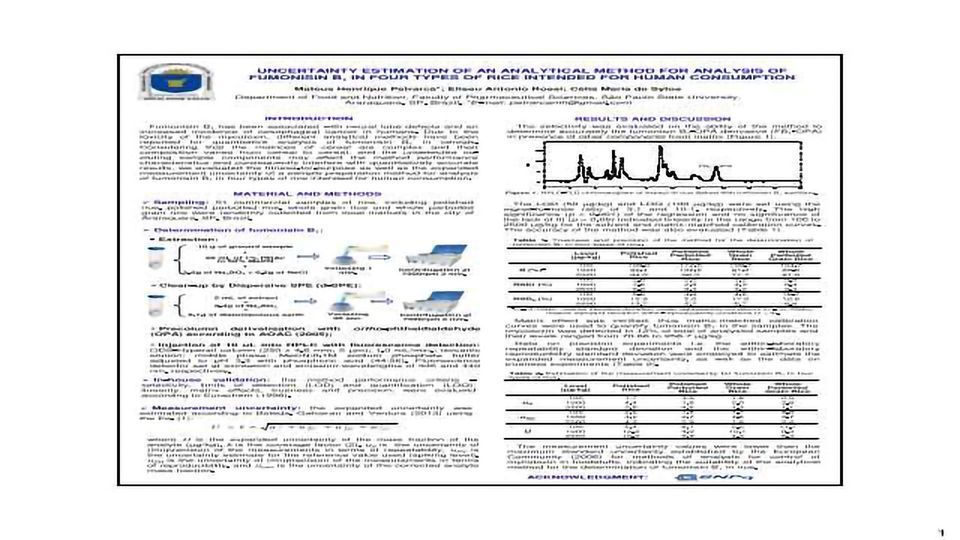Uncertainty estimation of an analytical method for analysis of fumonisin B1 in four types of rice intended for consumption human

Fumonisin B1 has been associated with neural tube defects and an increased incidence of oesophageal cancer in humans. Due to the toxicity of the mycotoxin, different analytical methods have been reported for quantitative analysis of fumonisin B1 in cereals. Considering that the matrices of cereal are complex and their composition varies from cereal to cereal, we evaluated the fitness-for-purpose as well as the measurement uncertainty of a sample preparation method based on QuEChERS procedure for the determination of fumonisin B1 using HPLC-FLD after precolumn derivatisation with ortho-phthaldialdehyde. From in-house validation data, the uncertainty of (im)precision of the measurement in terms of repeatability and reproducibility, the uncertainty estimate for the reference value used in spiking experiments, and the uncertainty of the corrected analyte mass fraction were calculated and combined to obtain the expanded uncertainty for fumonisin B1 in polished rice, polished parboiled rice, whole grain rice and whole parboiled grain rice at levels 100 µg/kg, 1000 µg/kg and 2500 µg/kg, according to Boleda, Galceran and Ventura [1]. The expanded uncertainty ranged from 4.05 µg/kg for polished parboiled rice at 1000 µg/kg to 12.23 µg/kg for polished rice at 1000 µg/kg, whose values were lower than the maximum standard uncertainty established for methods of analysis for control of mycotoxin in foodstuffs, indicating the suitability of the analytical method for the determination of fumonisin B1 in rice.





